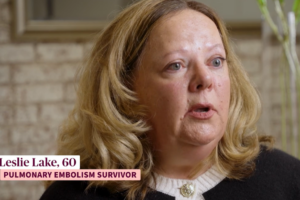Can children get blood clots?
Most cases of DVT occur in children who have an intravenous catheter (a thin tube inserted into a vein) because of a serious medical illness. Other risk factors for DVT or PE in children include infection, heart disease, surgery, trauma, cancer, lupus, rheumatoid arthritis, diabetes, kidney disease, heart disease, sickle cell anemia, leukemia, obesity, and thrombophilia—all conditions that are also risk factors in adults. In general, because children are less likely to develop DVT or PE, multiple risk factors are usually present in children who do experience these conditions. Eighty percent of children who develop DVT or PE in the absence of any other obvious risk factor will have a thrombophilia, and frequently multiple forms of thrombophilia.
Diagnosing DVT or PE in children is not necessarily the same as it is in adults. As mentioned earlier, most cases of DVT in children are related to placement of an intravenous catheter, and intravenous catheters are typically placed in an arm or neck vein. The clots that occur in these veins are hard to see with duplex ultrasound because the ultrasound cannot penetrate the bones of the chest. Given that ultrasound misses more than half of cases, magnetic resonance imaging may be necessary to make a definitive diagnosis. The preferred method to diagnose a PE in children is a VQ scan. (See Question 9.)
Little research has been done on the treatment of thromboses in children. Specialists in pediatric hematology who treat children with DVT or PE tend to base their therapy on data gathered from studies involving adults. Not only has little research been done in children, but no liquid form of warfarin or pediatric doses of LMWH in pre-drawn-up syringes exist. Because few pediatricians have experience in treating children with blood clots, children with a DVT or PE are best treated in a specialized hemostasis and thrombosis center or hemophilia treatment center. The good news is that children who have been treated with warfarin for long periods of time, other than having some thinning of their bones, seem to develop normally.




